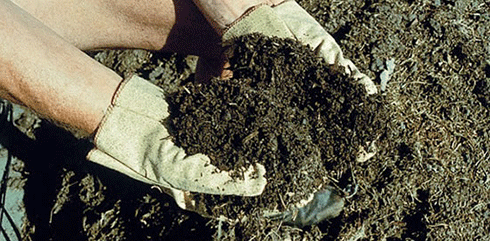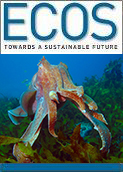
|
Published: 23 September 2013
Human waste to help lock up carbon in soils?
Australia produces hundreds of thousands of tonnes of ‘biosolids’ – the solid waste left over after sewage treatment – per year, which could be used to lock up carbon emissions and build more fertile soils, says a researcher from the CRC for Contamination Assessment and Remediation of the Environment (CRC CARE) and University of South Australia.

|
|
Australian biosolids are generally low in toxic heavy metals – compared with some other countries round the world – so may be more suitable for agriculture. Credit:
Sydney Water
|
‘Our research shows that if applied to agricultural soils or revegetation projects, biosolids – as well as increasing soil fertility and boosting plant growth – can lock up carbon,’ says Professor Nanthi Bolan.
‘Biosolids contain nitrogen and other nutrients for crop growth, organic matter to improve soil structure, and non-degradable forms of carbon that will stay in the soil for a long time.
‘Currently Australia stockpiles about 70 000 tonnes of biosolids a year from its major urban sewage works. This is a huge and valuable resource that is presently largely unused. America, for example, produces 7.5 million tonnes of biosolids a year.’
Prof. Bolan says that because Australian biosolids are generally low in toxic heavy metals – compared with some other countries round the world – they are particularly suitable to be incorporated into agricultural soils.
‘The big issue with biosolids is the cost of transporting them to where they will be used and spreading them on the soil. Our research indicates this can be offset not only by the boost to fertility and soil organic structure – but also by its ability to increase carbon retention in the soil.
‘In other words you could earn carbon credits by using treated human waste as a soil improver – which would pay for part of the cost of transporting and distributing it.’
Biosolids contain the major nutrients nitrogen and phosphorus, but also micronutrients and trace minerals which are increasingly lacking in the modern Australian diet, and whose lack is now linked to a number of important lifestyle diseases: ‘By recycling our waste through agriculture, we could in fact be helping to improve the nutritional quality of Australian food, conserving scarce nutrients and improving public health.’
Prof Bolan says that the amount of carbon that can be locked up depends on several variables – how the biosolids were stabilised at the sewage works, the type of crop they fertilise, and the levels of iron and aluminium in the soils, which combine with, and consequently lock up, the carbon in biosolids.
‘Up to 30 per cent of biosolids can consist of non-degradable carbon – and we need to encourage the use of the right sorts of processes in our sewage works to maximise this.
‘If you used biosolids for tree crops or for landscape revegetation it would then lock up more of the mobile carbon for a much longer time than an annual crop like wheat or canola.
‘Some people may not like the idea of using human waste in the food system, but in reality we have done this for thousands of years – and modern biosolids are far cleaner and safer than untreated waste.
‘At a time when fertilisers are becoming ever more costly and soils degraded, biosolids offer a major source of low-cost nutrients and a source of better soil quality. However the major barrier till now has been cost associated with transport and spreading.
‘The big benefit they offer may be carbon lock-up – and with any form of carbon trading scheme in Australia we could use carbon credits to subsidise this form of soil improvement from an underutilised resource, and use our poo as another way to combat global warming.’
Prof Bolan says that with many resources – including some plant nutrients – expected to peak in the 21st century owing to demand from a growing world population, it makes sense to recycle everything of value – including our own waste.
Source: CRC CARE



